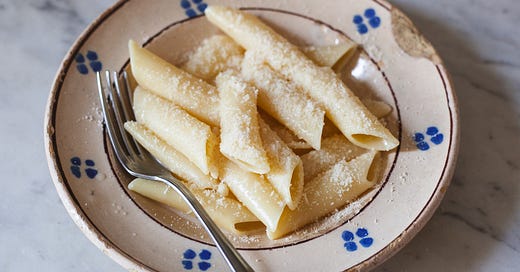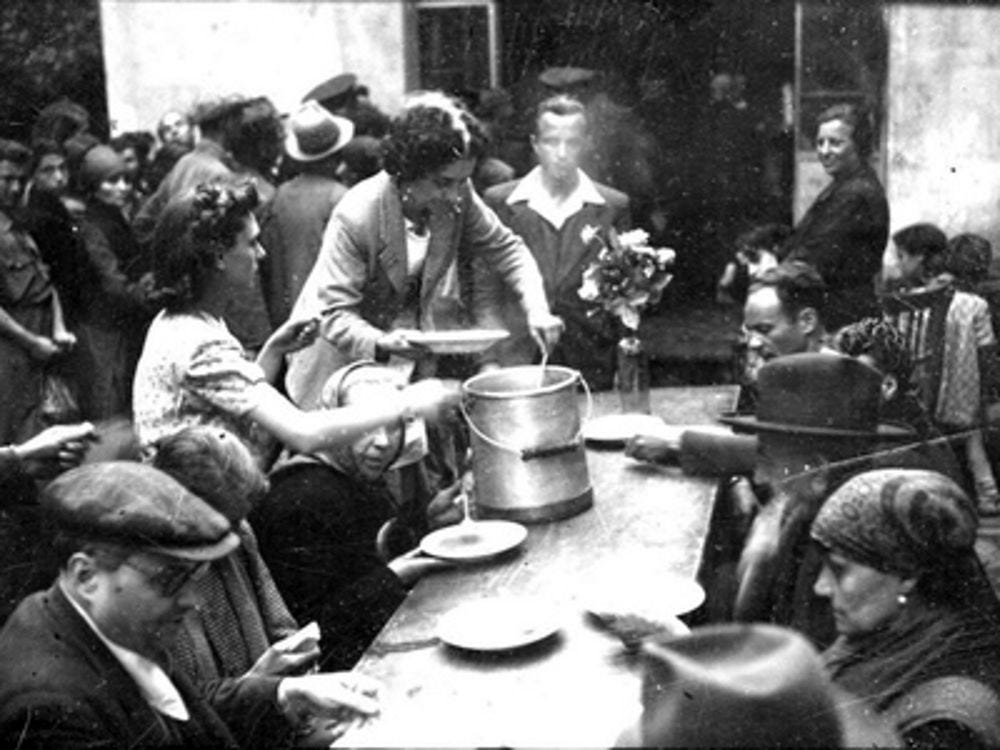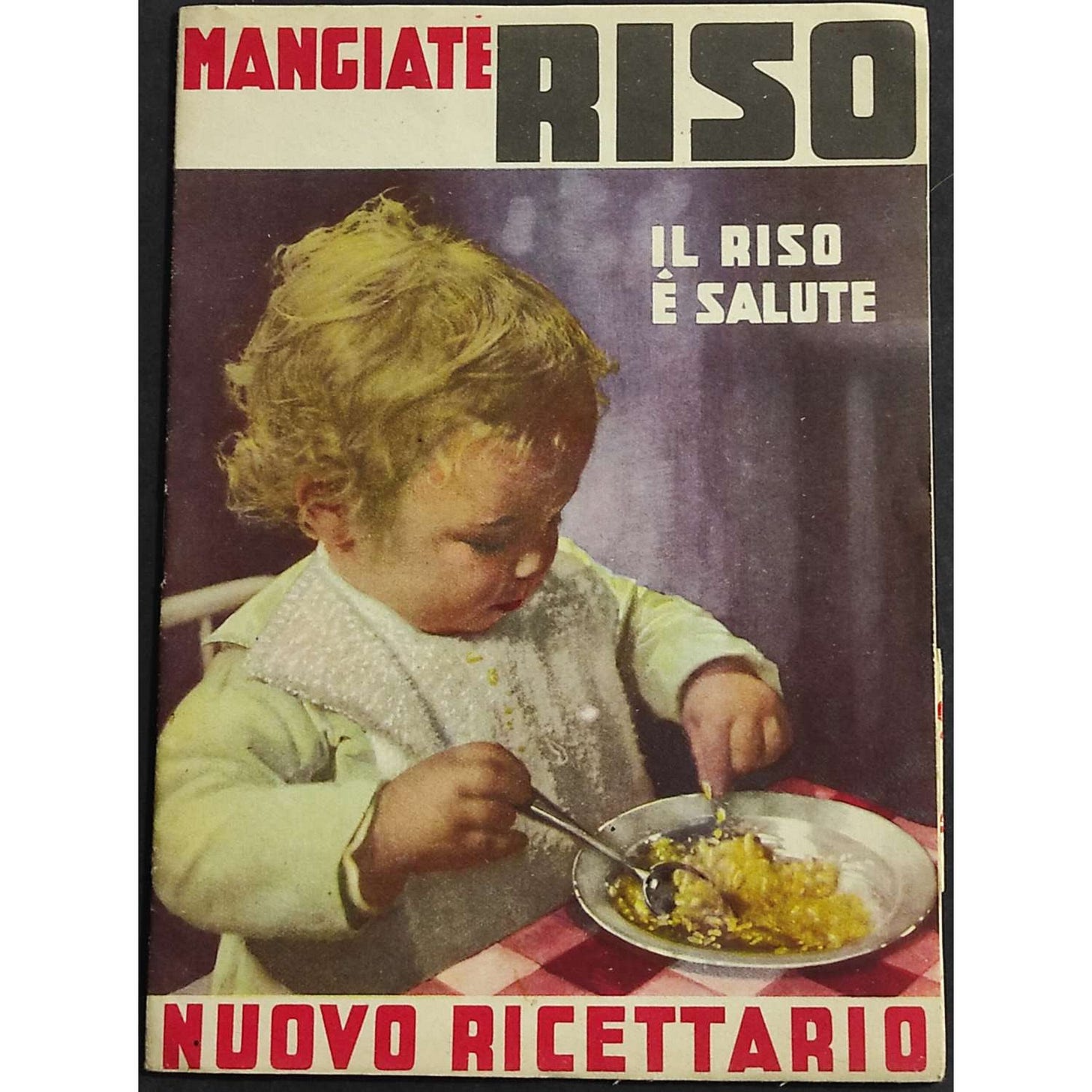Antifascist Pasta, a Recipe and a Story of Resistance
Part 2: The wartime pasta dish that celebrates freedom
This is Part 2 in a series of posts that revolve around themes of food, hunger and resistance, in particular of the devastating last two years of Italy’s involvement in the Second World War. Part 1 covers the history of Italy’s partisans through food and leads us to the moment when, on the night between July 24 and 25, 1943, Mussolini was deposed and arrested.*
It was a cause for celebration — Italians took to the streets and piazzas, shouting with joy, destroying busts of Mussolini, spitting on his portraits, and freeing political prisoners (antifascists). It was the end of 20 years of Mussolini’s Fascist dictatorship and an event that caused many to mistakenly hope that it meant the war was over too: Italy was already facing defeat and was starving.
As discussed in Part 1, food had been heavily rationed since 1935 and it was only getting scarcer, especially in the cities. Basic ingredients — salt, flour, pasta, rice, meat, olive oil, lard, butter, bread — were not only rationed but often non existent. Meat was impossible to come by and vegetables were few. Makeshift gardens to grow things like potatoes popped up in the piazzas of cities like Turin. Bread was often “pane nero”, a dark bread made with many other things in it that weren’t precious white flour. Farmers were forced to use their land to grow things for the German army like Ricinus (which is not edible but makes castor oil needed for their airplane engines) and were obliged to give a handsome portion of any grain, meat and milk they produced to German troops to ship home.
The pasta haters
Pasta — hard to find during the war — already was, in fact, long demonised by the Fascist government, a sentiment echoed by the Futurists, in particular Filippo Tommaso Marinetti, who wrote a manifesto against pastasciutta** in his La Cucina Futurista cookbook of 1932 (read this piece where I wrote about this back in 2017 for Food52) making unsubstantiated claims that the “absurd Italian gastronomic religion” of pasta makes people “heavy”, “slow” and “pessimistic”, adding this ridiculous rant:
“Any pastascuittist who honestly examines his conscience at the moment he ingurgitates his biquotidian pyramid of pasta will find within the gloomy satisfaction of stopping up a black hole. This voracious hole is an incurable sadness of his. He may delude himself, but nothing can fill it. Only a Futurist meal can lift his spirits. And pasta is anti-virile because a heavy, bloated stomach does not encourage physical enthusiasm for a woman, nor favour the possibility of possessing her at any time.”
But the Southern Italians were not on board. Housewives from Puglia wrote a letter in protest to the anti-pasta manifesto and the Duke of Bovino, mayor of Naples, responded to Marinetti by saying, “The angels in heaven eat nothing but vermicelli al pomodoro.”
The Fascist government (in fact Marinetti and Mussolini were friends) supported the anti-pasta stance because it suited their own propaganda as pasta being unsuitable for good, strong soldiers and unpatriotic because Italy relied heavily on importing wheat from abroad for pasta (still today this is true***) and part of Mussolini’s Fascist agenda was making Italy a completely self-sufficient nation, an island that did not need help from foreigners.
In 1925 he launched the Battle for Grain to “free” Italy from foreign dependency, a counter-productive campaign that only made food shortages and inflation worse. His patriotic citizens were encouraged to eat rice instead, which can be grown in northern Italy, but was harvested (usually by women, and many of them from the pasta-loving south who had moved in search of work) in harrowing conditions.
Posters of rosy-cheeked babies digging into bowls of rice appeared with the slogan, “Il riso è salute” (rice is health), along with government produced cookbooks on how to prepare rice in a million different ways.
There was another factor for this hostile stance towards pasta due to its foreign influence in Mussolini’s mind. The academic and Italian food myth-buster Alberto Grandi explains that before the First World War, Italians (especially northern Italians, like Mussolini) were not familiar with pasta, but in those years after that first war, they discovered it via their relatives who had moved to America. Italian-Americans, so far from their motherland, he explains, mixed (here he’s referring to the fact that Italy was still extremely regional at the time, where overseas different Italians from all different regions came together) and created a national culture that didn’t exist in Italy yet.
“The pasta, in some way, becomes the symbol of this and automatically is associated with the American Dream.” — Alberto Grandi
But you may notice it didn’t work. Sure, rice is still enjoyed and eating in northern Italy, particularly Lombardy and the Veneto. But nothing beats pasta for convenience, taste, adaptability to seasonal and regional variations and ease. Southern Italians in particular never switched to rice, they simply loved pasta too much — as we all still do today.
The day of the antifascist pasta
If pasta was something that Fascists despised, then you could say a love of pasta — any pasta — is instantly antifascist.
But there is one dish, one event, above all represents the antifascist pasta: the incredible gesture made by the Cervi family, Genoveffa and Alcide and their seven sons, simple farmers, partisan supporters, who offered their entire town a celebratory meal of 370 kilos (815 pounds) of pasta dressed in butter and parmesan cheese (because ragu was an impossibility). Simple ingredients but ones that could be described as pure luxury at the time.
It might sound incredibly humble and ordinary, but in the context of the war, the hunger, the starvation gripping every corner of the country and the brutality of the Fascist regime, what they gave their community was generosity, humanity and joy. They gave them conviviality and for that one evening, freedom — the freedom to sit in the piazza enjoying a special, rare meal of pasta together.
The Cervi family didn’t hear right away of the news of Mussolini’s arrest because they were busy working in the fields (it was July, high harvest time), but when they did, they danced and sang all night, then set about freeing their antifascist friends from prison and they decided to celebrate with pasta — finally, after 21 years, they were free from Fascism.
The Cervi collected flour they and fellow farmers had been saving and brought it to the baker, Amadeo Rapacchi, an antifascist who also had a pasta machine with an extruder, and he dried them in the ovens. The butter and cheese they had to obtain on credit from the local caseificio, the dairy.
“The boiling sounded like a symphony. I heard many conversations on the end of Fascism but the most beautiful speech was that of the pasta boiling,” recalls Alcide in I miei sette figli (1955).
They cooked the pasta (some at home, some in big containers of the dairy), friends helped grate the cheese to go into big pots filled with pasta and the butter and they brought them on carriages drawn by two horses to the piazza of Campegine, their town in the province of Reggio Emilia (Emilia-Romagna) to share with everyone. People came out of their homes with their own plates and forks and joined in — there was no rationing here, if you wanted seconds, there were seconds. The police came in to disperse the huge group of people (gatherings of more than 3 people were strictly forbidden by Fascism since 1931), but there was confusion over what rules now needed to be enforced and Gelindo invited them eat with them — even they couldn’t resist joining the line for a heavenly plate of pasta.
It was a day of joy — a day of peace, a moment of normality — in the middle of a war and that simple plate of pasta became a symbol of freedom and resistance.
It was July 27, 1943.
Today Antifascist Pasta is celebrated on the 25th of July — the official date that is marked as the end of Fascism. Istituto Alcide Cervi (a museum and archive set in the original Cervi house dedicated to the fight for democracy) has a list of all the places in Italy that are offering Antifascist Pasta that day — “offering” being the important word because for it to be Antifacist Pasta it has to be free, in the spirit of that generous, festive day in the middle of the war with kilos and kilos of forbidden pasta served to the whole town of Campegine.
A recipe for pasta antifascista
There is no set recipe but this is one of the ways we make pasta in bianco (“white pasta” aka plain old pasta with butter or olive oil and parmesan cheese) at our home — we make this weekly, it is our daughter’s favourite pasta dish and is a lifesaver when you need a very quick, satisfying meal for a hungry kid. It’s also a pasta that anyone who lives in Italy knows is guaranteed on every single children’s menu and is what your nonna or mamma will suggest you eat when you’re not feeling well.
The pasta in the photo here is called pennone (literally, big penne! They’re huge!) but go ahead and use whatever pasta you have.
For 4 people
320 grams of pasta of choice
100 grams of butter (preferably unsalted so you can add salt to your liking)
100 grams (2 big handfuls) of grated Parmesan cheese
Cook the pasta in a large pot of salted water and cook al dente (follow the timing on the package and perhaps even shave off 1 minute). While that is cooking, melt the butter in a wide pan, add a little bit of the pasta water (a few tablespoons or) and swirl or stir vigorously to create a creamy sauce. Keep warm but turn off the heat.
Strain the pasta once it’s ready (set aside a cup full of the pasta water in case you need any of it) and add it to the butter in the pan (no heat needed) and toss to coat completely with the Parmesan (all of it or save some for the top). It should look nice and creamy and taste buttery and cheesy. If it’s looking a little dry, add some of the pasta water and toss again. Serve as it is — the taste of freedom, comfort and joy. It’s lovely with some freshly ground black pepper (and then it becomes cacio e pepe-ish).
What happened next?
Unfortunately the story of the Cervi brothers did not have a happy ending. The arrest of Mussolini was not, as many hoped, the end of the war, but the start of something worse. Just six weeks later, on the 8th of September, it was announced that Italy would switch sides and now side with the Allies in the war. Most of Italy’s army had already disbanded and gone home, but Hitler’s soldiers were ordered to double down on the terror and violence inflicted on the Italians, who had just been fighting alongside them and were now enemies and traitors. At the same time, a civil war between the resistance and the Fascists broke out. Alcide and his sons, Gelindo, Antenore, Aldo, Fernando, Agostino, Ovidio and Ettore (aged between 42 and 22 years, all but two the fathers of young children), were arrested at home on the 25th of November and taken to prison. A month later, the antifascist brothers were executed by firing squad to set an example, while their unknowing father was still in jail — he managed to escape but it wasn’t until he arrived home that he found out. He published a book called I miei sette figli (“My seven sons”) in 1955, which became a film (The Seven Cervi Brothers, directed by Gianni Puccini, in 1968).
Next week paid subscribers will get Part 3 of this little piece of Italian war history and it speaks about what happened at the end of the war in 1945, when the Allies rolled in (and the food they brought) and beyond. And there is another pasta recipe born from this time too — carbonara.
Below, a photo of Famiglia Cervi with Alcide and Genoveffa (centre, front row) surrounded by their seven sons.
*(Yes, I had to brush up on my Italian history too and I did a rundown in Part 1 but if you need a bit of background, this Wikipedia page on the Fall of Fascism can help).
**Pastasciutta is an old (circa 1900) but general name for pasta, the word “asciutta” means dry and refers to the gesture of draining the pasta, in other words drying it, before dressing it, putting it in sauce etc before serving it.
*** Italy only produces 50% of its soft wheat and 60% of its Durum wheat needed for pasta production, the rest comes from all over the world but namely Canada, US, Australia, France (but also Russia, Ukraine, Turkey, Kazakhstan. Take a look at the pasta packet next time, you’ll see the list of countries where pasta comes from, here’s a little guide to some popular pasta brands from a few years back so it is not up to date but gives you an idea.
Resources:
Partigiani a Tavola: Storie di Cibo Resistente e Ricette di Libertà (2015).
I miei sette figli (1955).








The past is so quickly forgotten. This happened not all that long ago and yet so few seem aware of Italy’s history in the 20th century. Are you familiar with the book A Bold and Dangerous Family, by Caroline Moorehead? It’s about another anti-fascist family (Rosselli) who helped to lead the resistance. Filled with details I knew nothing about. A fascinating read.
This just makes me sad as Italy once again embraces fascism. History is constantly being erased and too easy to forget.